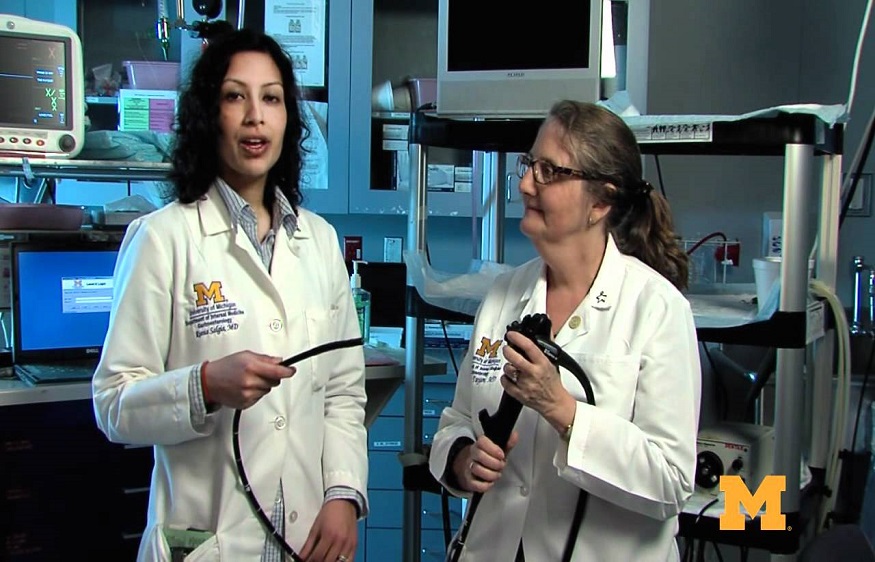Colonoscopy in five questions
3 min read
It is the most reliable technique for exploring the lining of the intestine and colon. Very common, this examination is carried out by a gastroenterologist.
• For who ?
All people, men and women, whatever their age, with bleeding of digestive origin, chronic diarrhea and/or unexplained abdominal pain. For all people with a family history of colorectal cancer, it is recommended to regularly perform such an examination from the age of 45. And to renew it thereafter every five years. Screening thus makes it possible to reduce mortality due to colon cancer by 30%.To detect the presence of polyps (benign tumors), as well as to discover inflammation or infection of the colon. It is also the reference examination for detecting colon cancer.
• How? ‘Or’ What ?
It consists of exploring the large intestine, using a colonoscope introduced through the anus. This device is in the form of a flexible tube 1 centimeter in diameter, equipped with a system of optical fibers which retransmit the images on a screen. The colonoscope can be equipped with forceps, to take samples of mucous membranes, if necessary, and scissors, to remove small polyps. It’s not a painful exam, but it’s not very pleasant.
• Steps ?
– In the period preceding the examination, the gastroenterologist prescribes a diet, as well as a preparation to drink, not very pleasant to swallow, but essential to clean the intestine as well as possible and limit the quantity of feces. Colonoscopy is performed under light general anesthesia to make the examination more comfortable. The patient is placed either on the side or on the back, according to the doctor’s preference. This one then introduces very gently the colonoscope by the anus, then progresses slowly inside the intestine. To facilitate the exploration, the device sends at the same time a gas which makes it possible to “smooth up” the mucous membrane. Each square centimeter of the intestinal wall is then carefully analyzed. – If the doctor has doubts about an abnormal image, he may decide to take mucosal samples (biopsies) which will then be sent to a laboratory for analysis. Similarly, if he discovers small polyps, he can decide to destroy them by burning them with a laser or by cutting them at the base. Depending on the procedures performed, the examination can last between half an hour and an hour.
• And after?
The patient remains under observation for approximately three hours. Due to the insufflation of air in the intestines, he may experience mild abdominal pain or feel bloated. But these inconveniences will disappear quickly. After a snack, he is allowed to go home and, the same evening, he can eat and drink normally. usually, the gastroenterologist immediately gives an initial comment on the results. When he proceeded to a removal of polyps or to a biopsy, it is mentioned in the report which will be sent to the doctor treating the patient. It is up to him to explain to him the possible complications and to set up a treatment, if this proves to be necessary.
• Virtual colonoscopy
For patients who find it difficult to endure the traditional examination, there is a new, less invasive technique without anesthesia to explore the colon: virtual colonoscopy. This technique uses a scanner and computerized image processing to obtain a three-dimensional visualization of the colon. The images obtained thus simulate those obtained by colonoscopy. however, this examination also has its limits, because the CT scan does not detect lesions that are not in relief. In addition, if the CT scan reveals a lesion, it will still be necessary to perform a classic colonoscopy.




